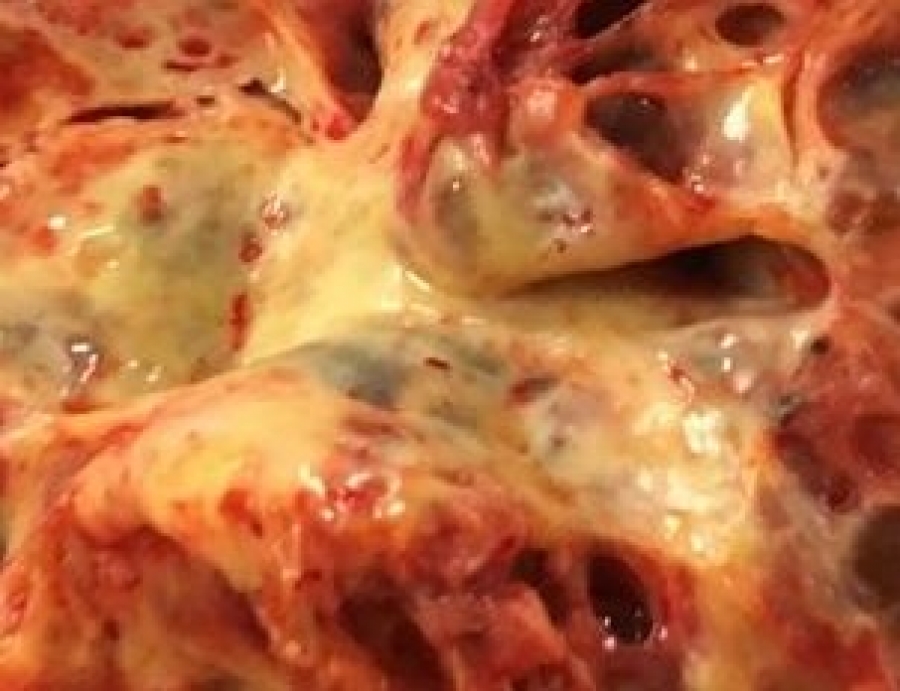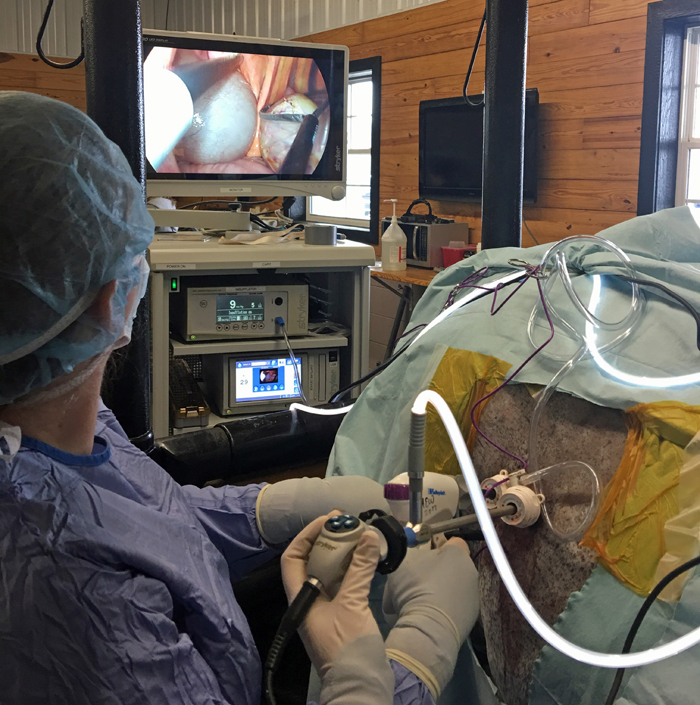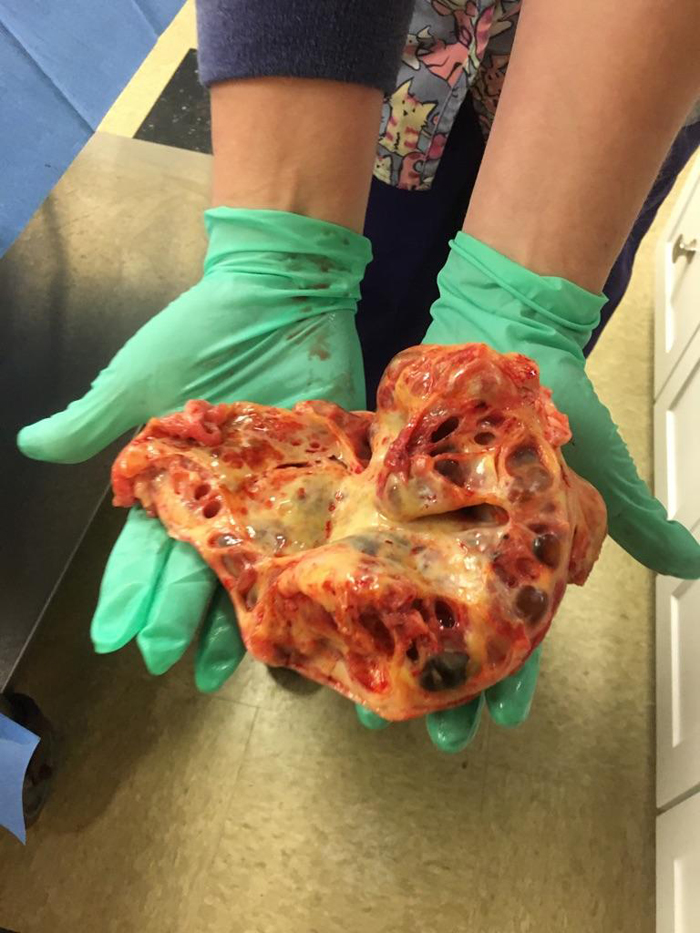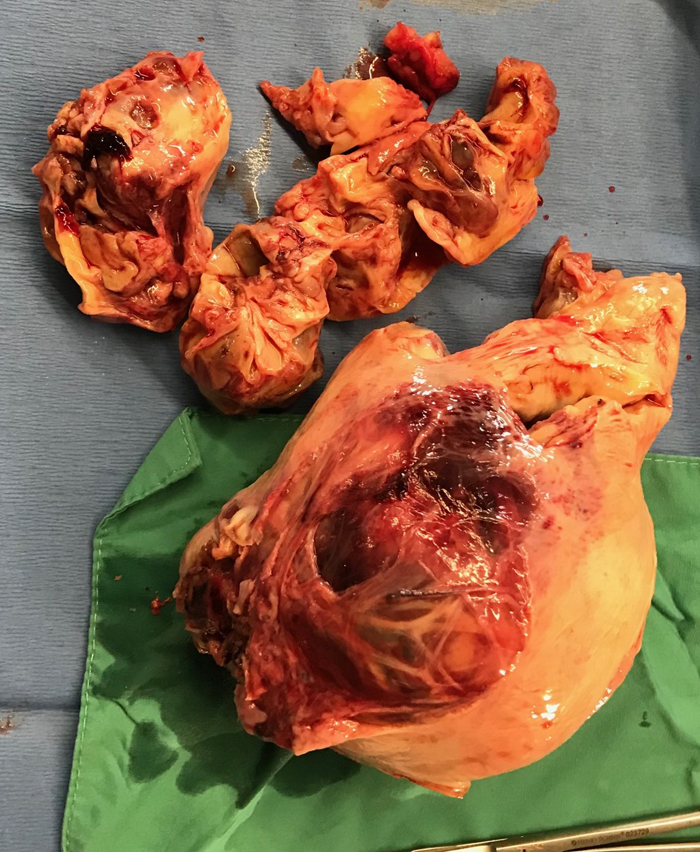What’s your diagnosis?
A 13 year old, Quarter Horse mare presents to the SVEC Sports Medicine service with a history of displaying intermittent mild signs of colic for the past 6 months (July – December). The signs of colic include inappentence, flank watching and pawing. The symptoms are alleviated with an appropriate dose of Flunixin Paste orally. Her manure is loose at times and she does urinate frequently. She seems more irritable when ridden and a bit more aggressive towards her pasture mates. The referring veterinarian performed a rectal exam and found a large hard mass in the right mid abdominal area.
What is your diagnosis and next steps/treatments?
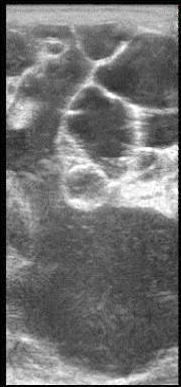
The Saginaw Valley Equine Answer
Answer: Upon arrival to SVEC, the doctors performed a rectal ultrasound of the right abdominal mass which was found to be multilobulated/cystic in nature (ultrasound picture?) and approximately the size of a volleyball. A blood hormone panel (Progesterone/Testosterone/Inhibin) was performed which came back with elevated testosterone and inhibin. The decision was made to perform a standing laparoscopic (minimally invasive) exploratory and removal of the cancerous ovararian tumor. The SVEC surgery service is shown removing the large tumor. There were multiple large fluid cavities within the ovary, most of which contained clear cystic fluid and some of which contained fluid consisted with blood.
